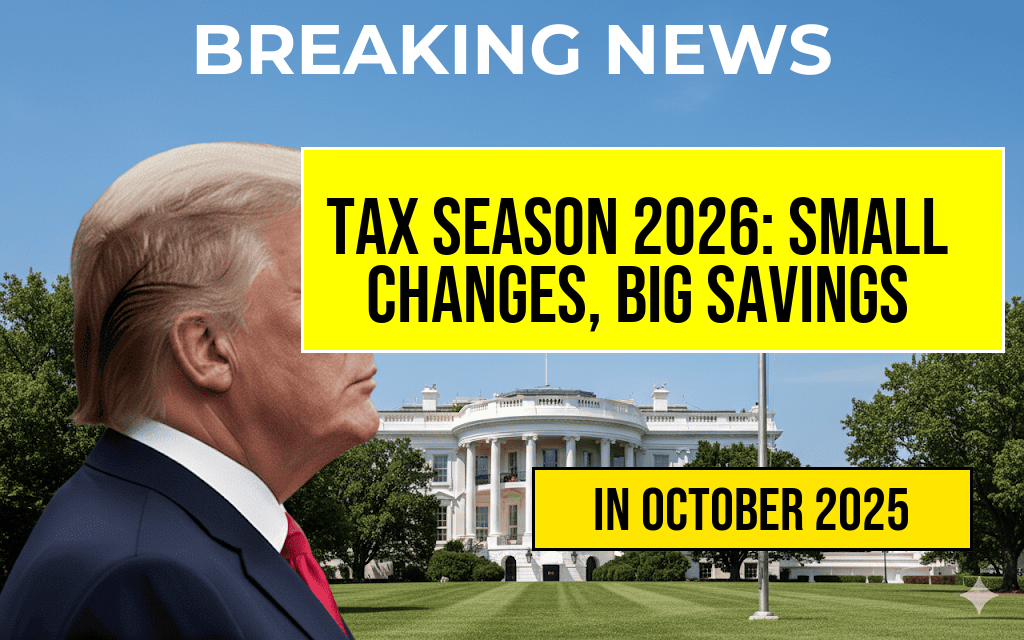Tax Season 2026 Outlook: Bloomberg Forecasts Minor Bracket Changes That Could Save You Hundreds
As taxpayers prepare for the upcoming 2026 filing season, financial analysts and tax experts are scrutinizing the latest projections to identify potential benefits and pitfalls. According to Bloomberg’s recent forecast, the upcoming tax brackets are expected to see only slight adjustments, which may translate into meaningful savings for many Americans. These modest changes are driven primarily by inflation adjustments and legislative updates, with some brackets shifting just enough to impact taxpayers’ liability. While the changes may seem subtle, they could mean hundreds of dollars in tax savings for households across various income levels, especially those near bracket thresholds. This season’s forecast underscores the importance of strategic planning and staying informed about evolving tax policies to maximize deductions and credits.
Understanding the Expected Changes in Tax Brackets
For the 2026 tax year, the Internal Revenue Service (IRS) is expected to maintain most of its current tax bracket structures, with minor inflation-based adjustments. Bloomberg’s analysis indicates that the income thresholds defining each bracket will see an average increase of around 1.8%, slightly easing the tax burden for many filers. These adjustments are aligned with projected inflation rates, which are expected to hover around 2% for the year. As a result, taxpayers with incomes near bracket thresholds could benefit from these slight increases, potentially avoiding higher marginal rates or reducing their overall liability.
| Filing Status | Tax Bracket | Previous Threshold (2025) | Projected Threshold (2026) |
|---|---|---|---|
| Single | 10% | $0 – $11,000 | $0 – $11,200 |
| Single | 12% | $11,001 – $44,725 | $11,201 – $45,400 |
| Married Filing Jointly | 10% | $0 – $22,000 | $0 – $22,400 |
| Married Filing Jointly | 12% | $22,001 – $89,450 | $22,401 – $90,800 |
Potential Tax Savings for Different Income Groups
While the adjustments may seem minor, their impact varies significantly across income brackets. For middle-income households, even a few hundred dollars in tax savings can influence annual budgeting and financial planning. For example, a single filer earning approximately $45,000 could see their marginal tax rate remain at 12% instead of creeping into the 22% bracket, reducing their tax liability by roughly $250 to $300. Similarly, married couples filing jointly with combined incomes near $90,000 might benefit from the increased thresholds, potentially saving similar amounts depending on deductions and credits claimed.
High-income taxpayers, however, are less likely to experience drastic changes unless their income approaches the upper limits of the current brackets. Yet, even marginal shifts can influence the timing of income recognition or the strategic use of tax-advantaged accounts, emphasizing the need for proactive planning.
Legislative and Policy Factors Influencing 2026 Tax Year
Beyond inflation adjustments, legislative developments could further shape the tax landscape in 2026. The Biden administration’s recent proposals to modify certain deductions and credits, such as adjustments to the standard deduction and capital gains taxes, remain under review. Additionally, ongoing discussions about extending or modifying the Child Tax Credit and other family-related benefits may influence taxpayers’ liabilities.
Tax policy experts recommend closely monitoring updates from the IRS and Congress as the year progresses. Changes enacted before the filing deadline could necessitate adjustments in withholding or estimated payments, potentially affecting overall tax outcomes. Resources like IRS.gov and reputable financial news outlets can provide timely guidance.
Strategies to Maximize Savings in 2026
- Review Income Thresholds: Confirm if your income falls near a bracket cutoff and consider timing strategies for income realization or deferrals to optimize tax rates.
- Leverage Deductions and Credits: Maximize deductions such as mortgage interest, charitable contributions, and retirement contributions to lower taxable income.
- Utilize Tax-Advantaged Accounts: Contribute to 401(k), IRA, or Health Savings Accounts (HSAs) to reduce taxable income and enhance long-term savings.
- Stay Informed on Legislative Changes: Keep abreast of potential policy shifts that could alter tax liabilities or create new opportunities for savings.
Expert Opinions and Future Outlook
Financial advisors emphasize that while the 2026 adjustments are modest, they highlight the importance of proactive tax planning. “Even small shifts in tax brackets can make a significant difference over time, especially for those close to the thresholds,” notes Laura Jensen, a CPA and financial planner. “Taxpayers should review their current strategies and consider consulting with a professional to identify opportunities for savings.”
As the tax landscape evolves, staying informed and prepared can help Americans make the most of these minor yet impactful changes. For more insights on upcoming tax developments, visit Forbes or consult official IRS guidance.
Frequently Asked Questions
Question
What are the main changes to the tax brackets forecasted for Tax Season 2026 according to Bloomberg?
Question
How could the minor bracket adjustments in 2026 potentially help taxpayers save hundreds of dollars?
Question
Will the overall tax rates change significantly in 2026 based on Bloomberg’s forecast?
Question
Are there any specific tax deductions or credits expected to be affected by the 2026 bracket adjustments?
Question
When should taxpayers start planning for the 2026 tax season considering these forecasted changes?

Leave a Reply